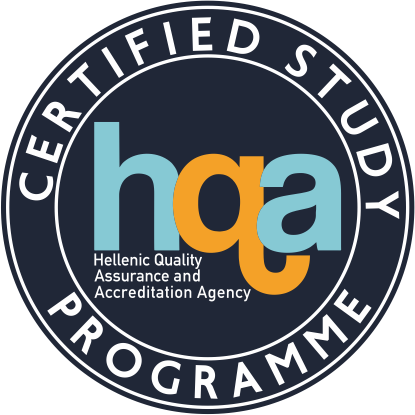| School |
Natural Sciences |
Academic Unit
|
Geology Department |
Level of Studies
|
Undergraduate |
Course Code
|
Geol_004 |
| Εξάμηνο σπουδών |
1ο |
Course Title
|
Chemistry |
Independent Teaching Activities
|
Lectures and seminars |
Weekly Teaching Hours
|
4 (3 lect. and 1 sem.) |
| Credits |
5 |
Course Type
|
Field of Science ( General Chemistry) |
Prerequisite Courses
|
Typically, there are not prerequisite courses |
Language of Instruction & Examinations
|
Greek. Teaching may be however performed in English in case foreign students attend the course. |
Is the Course offered to Erasmus Students
|
Υes |
| Course Web-Page (URL) |
|
Learning Outcomes
|
By the end of this course the student will be able to:
- Make and record measurements of the properties and chemical behavior of matter and describe the periodic table
- Determine the chemical formula using the mass percentage of the elements in chemical substances and calculate the reactants and products in a chemical equation
- Establish a critical relationship between the mass of a chemical substance and the quantity of that substance (in moles). Develop a molar interpretation of chemical equations, which then allows for calculation of the quantities of reactants and products.
- Recognize the various types of reactions occur in aqueous solutions. Determine the substances present in materials using these chemical reactions
- Recognize gases, liquids and solids. Define the intermolecular forces in a compound. Describe the crystal lattices and unit cells
- Describe the factors that make one substance soluble in another. Define ways of expressing solutions concentration. Determine the colligative properties of molar and ionic solutions.
- Define acid and base according to various concepts. Decide whether reactants or products are favored in an acid–base reaction. Calculate the concentrations of Η3Ο+, ΟΗ- and define the pH value in solutions of a strong acid or base
- Obtain an equilibrium constant from reaction composition. Calculate concentrations of species and pH value in a weak acid or base solution, as well as in a salt solution. Determine the Κα and Κb Calculate the pH value of a buffer solution
- Calculate the solubility product constant, Ksp and the solubility of slightly soluble (or nearly insoluble) ionic compounds. Predict if an ionic salt can precipitate when the ion concentrations are known
|
General Competences
|
By the end of this course the student will, furthermore, have developed the following skills (general abilities):
- Ability to exhibit knowledge and understanding of the essential facts, concepts, theories and applications which are related to General Chemistry.
- Ability to apply this knowledge and understanding the solution of problems related to General Chemistry
- Αbility to adopt and apply methodology to the solution of non familiar problems of General Chemistry.
- Study skills needed for continuing professional development.
- Ability to interact with others in chemical or of interdisciplinary nature problems.
Generally, by the end of this course the student will, furthermore, have develop the following general abilities (from the list above):
- Searching, analysis and synthesis of facts and information, as well as using the necessary technologies
- Adaptation to new situations
- Decision making
- Autonomous (Independent) work
- Excercise of criticism and self-criticism
- Promotion of free, creative and inductive thinking
- Respect to natural environment
- Work design and management
|
| Syllabus |
- Chemistry and Measurements
A brief look in modern Chemistry. Experiments and their interpretation. Measurements and significant figures.
- Atoms, Molecules and Ions
Atomic Theory of Matter. Nuclear Structure; Isotopes. Periodic Table of the Elements. Molecular and Ionic Substances. Naming Simple Compounds. Writing Chemical Equations. Balancing Chemical Equations
- Calculations with Chemical Formulas and Equations
Molecular Mass and Formula Mass. Determining Chemical Formulas. Stoichiometry: Quantitative Relations in Chemical Reactions. Limiting Reactant in a Chemical Equation; Theoretical and Percentage Yields
Molecular and Ionic Equations. Precipitation Reactions. Acid–Base Reactions. Oxidation–Reduction Reactions. Balancing Simple Oxidation–Reduction Equations
- States of Matter; Liquids and Solids
Comparison of Gases, Liquids, and Solids. Changes of State Intermolecular Forces; Explaining Liquid Properties. Crystalline Solids; Crystal Lattices and Unit Cells
Solubility and the Solution Process. Colligative Properties. Ways of Expressing Solutions Concentration. Colloids Formation
Arrhenius and Brønsted–Lowry Concepts of Acids and Bases. Relative Strengths of Acids and Bases. Self-Ionization of Water and the pH of a Solution
Prediction of the Direction of a Reaction using the Equilibrium Constant. Acid or Base-Ionization Equilibria in Solutions of a Weak Acid or Base. Acid–Base Properties of Salt Solutions. Buffers
- Solubility and equilibria of slightly soluble (or nearly insoluble) ionic compounds
The Solubility Product Constant. Precipitation Calculations and criterion for precipitation. |
| Delivery |
Lectures and seminars face to face. |
Use of Information & Communication Technology
|
Use of Information and Communication Technologies (ICTs) (e.g. PowerPoint, video etc) in teaching. The lectures content of the course for each chapter, all problems, in the form of a series of ppt files, and announces are uploaded on the internet, from where the students can freely download them. |
Teaching Methods
|
| Activity |
Semester workload |
| Lectures (3 conduct hours per week ´ 13 weeks) |
39 |
| Seminars (1 conduct hour per week ´ 13 weeks) - solving of representative problems |
13 |
| Hours for private study of the student and optional problems solving given in each lecture (3 hours per week ´ 13 weeks) |
39+30=60 |
| Final written examination at the end of semester (3 conduct hours ´ 1 time) |
3 |
| Two optional tests during the semester (1/2 conduct hour ´ 2 times) |
1 |
| Total number of hours for the Course |
125 hours |
|
Student Performance Evaluation
|
- At the end of the semester there is a final written examination with multiple choice questions and short answer questions (open text books). Minimum passing grade: 5
- Optional participation in two written "tests" with multiple choice questions and short answer questions during the semester (open text books). The 1/10 of the grade of each test is added to the final examination grade (if it’s higher than 5)
- Optional delivery of solved problems (at least 2) each week, given in each lecture. Addition of 1 grade to the final exam grade (if it’s higher than 5) of the students who have delivered all the solved problems and the percentage of the unit to the others, according to the number of solved problems each person has delivered.
|
Attached Bibliography
|
- «Chemical Principles, The Quest For Insight», Peter Atkins, Loretta Jones, Leroy Laverman, 7η Edition, (Greek Translation by Petros Koutsoukos, Violeta Konstantinou, Paulos Klepetsanis, Christos Kontogiannis, Nikolaos Mpouropoulos, Kelly Velonia, Christos Pappas), Utopia Publications, Athens / 2018
- «GENERAL CHEMISTRY», Brown, Lemay, Bursten, Murphy, Woodward, Stoltzfus, 13η Edition, (Greek Translation by Periklis Akrivos), TZIOLA Publications, Thessaloniki / 2016
- «MODERN GENERAL CHEMISTRY»,, Ebbing and Gammon, 10η Edition, (Greek Translation by Nikolaos Klouras), P. ΤRΑΥLΟS Publications, Athens / 2014
- «INORGANIC CHEMISTRY», Pneumatikakis, Ch. Mitsopoulou, Κ. Μethenitis, Α. STAMOULIS Publications, Athens / 2005 (in Greek)
- «CHEMISTRY”, Jones and Atkins, 4th Edition, W.H. FREEMAN AND COMPANY Publications, New York 2000
- «BASIC INORGANIC CHEMISTRY», Nikolaos D. Klouras, KOSTARAKI Publications, Athens 1995 (in Greek).
|





